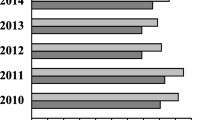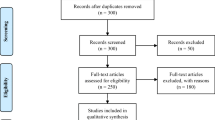Abstract
Research into workplace injuries traditionally focuses upon discrete injury events, such as falls, violence, contact with machinery and other traumatic events. By comparison, research literature on work-related injury events involving fire is sparse, despite the fact that fires can produce particularly severe injuries and involve multiple victims. Comparatively little is consequently known about the workplaces and workers involved in fire incidents and the circumstances surrounding these ignitions. This research addresses this knowledge gap by reviewing workplace investigation reports of fatal fires conducted by the Occupational Health and Safety Administration in order to identify critical factors in fatal fire incidents between 2013 and 2017. The research indicates that fatal injuries involving fire encompassed a broad range of occupations and work processes. Greater attention to training in hazard recognition and prevention are needed to reduce the threat of fire in work environments where ignition sources coexist with combustible materials.

Similar content being viewed by others
Notes
OSHA does not have jurisdiction over motor vehicle incidents on public roads or highways except for those taking place in a construction work zone, but there was no indication that these incidents involved construction zones.
References
Centers for Disease Control and Prevention (1999) Achievements in public health, 1900–1999: improvements in workplace safety—United States, 1900–1999. MMWR 48:461–469.
Hofmann DA, Burke MJ, Zohar D (2017) 100 years of occupational safety research: from basic protections and work analysis to a multilevel view of workplace safety and risk. J Appl Psychol 102:375–388. https://doi.org/10.1037/apl0000114.
Estes CR, Marsh SM, Castillo DN (2011) Surveillance of traumatic firefighter fatalities: an assessment of four systems. Public Health Rep 126:540–541. https://doi.org/10.1177/003335491112600410.
Hong O, Chi DL, Phelps S, Feld J, Vogel S (2012) Occupational injuries, duty status, and factors associated with injuries among firefighters. Workplace Health Saf 60: 517–523. https://doi.org/10.1177/216507991206001203.
Keim ME (2011) The public health impact of disasters. Am J Disaster Med 6:265–272. https://doi.org/10.5055/ajdm.2011.0065.
Stout NA, Linn HI (2002) Occupational injury prevention research: progress and priorities. Inj Prev 8(Suppl IV):iv9–iv14. https://doi.org/10.1136/ip.8.suppl_4.iv9.
Marsh SM, Fosbroke DE (2015) Trends of occupational fatalities involving machines, United States, 1992–2010. Am J Ind Med 58:1160–1173. https://doi.org/10.1002/ajim.22532.
Chi CF, Chang TC, Ting HI (2005) Accident patterns and prevention measures for fatal occupational falls in the construction industry. Appl Ergon 36:391–400. https://doi.org/10.1016/j.apergo.2004.09.011.
McPhaul KM, London M, Murrett K, Flannery K, Rosen J, Lipscomb J (2008) J Safety Res 39:237–250. https://doi.org/10.1016/j.jsr.2008.02.028.
Benavides FG, Delclos GL, Cooper SP, Benach J (2003) Comparison of fatal occupational injury surveillance systems between the European Union and the United States. Am J Ind Med 44:385–391. https://doi.org/10.1002/ajim.10290.
Williamson A, Feyer AM, Stout N, Driscoll T, Usher H (2001) Use of narrative analysis for comparisons of fatal accidents in three countries: New Zealand, Australia, and the United States. Inj Prev 7(Suppl 1):i15–i20. https://doi.org/10.1136/ip.7.suppl_1.i15.
U.S. Department of Labor, Bureau of Labor Statistics (2010) Occupational injury and illness classification system, version 2.01 (OIICS). Washington, DC. U.S. Department of Labor.
U.S. Department of Labor, Bureau of Labor Statistics (2009) Fatal workplace injuries in 2006: a collection of data and analysis. U.S. Department of Labor, Washington, DC.
Lincoln AE, Sorock GS, Courtney TK, Wellman HM, Smith GS, Amoroso PJ (2004) Using narrative text and coded data to develop hazard scenarios for occupational injury interventions. Inj Prev 10:249–254. https://doi.org/10.1136/ip2004.005181.
Drury CG, Brill M (1983) Human factors in consumer product accident investigation. Hum Factors 25:329–342. https://doi.org/10.1177/001872088302500310.
U.S. Department of Labor, Occupational Safety and Health Administration. https://www.osha.gov/stateplans/. Accessed 24 Oct 2019.
U.S. Department of Labor, Occupational Safety and Health Administration. https://www.osha.gov/report.html. Accessed 24 Oct 2019.
U.S. Department of Labor. Fatality and Catastrophe Investigation Summaries. https://www.osha.gov/pls/imis/accidentsearch.html. Accessed 7 May 2019.
U.S. Occupational Safety and Health Administration. Directorate of Training and Education. Flammable Liquids (Standard No. 29 CFR 1910.106. https://www.osha.gov/dte/library/TrngandMatlsLib_FlammableLiquids.pdf. Accessed 4 Jan 2020.
U.S. Chemical Safety and Hazard Investigation Board. Investigation Report: Combustible Dust Hazard Study (2006) https://www.csb.gov/combustible-dust-hazard-investigation/. Accessed 23 Dec 2019.
Campbell R, Dini DA (2016) Occupational injuries from electrical shock and arc flash events. Springer Briefs in Fire, Berlin.
Campbell R (2018) Fires in industrial or manufacturing properties. National Fire Protection Association, Quincy.
U.S. Department of Labor. Occupational Safety and Health Administration. Employer Responsibilities. https://www.osha.gov/as/opa/worker/employer-responsibility.html. Accessed 8 Jan 2020.
U.S. Department of Labor. Occupational Safety and Health Administration. Process Safety Management. https://www.osha.gov/SLTC/processsafetymanagement/index.html. Accessed 8 Jan 2020.
Author information
Authors and Affiliations
Corresponding author
Additional information
Publisher's Note
Springer Nature remains neutral with regard to jurisdictional claims in published maps and institutional affiliations.
Rights and permissions
About this article
Cite this article
Campbell, R. Using OSHA Investigation Summaries to Profile Fatal Work Injuries Involving Fire. Fire Technol 56, 2179–2207 (2020). https://doi.org/10.1007/s10694-020-00973-3
Received:
Accepted:
Published:
Issue Date:
DOI: https://doi.org/10.1007/s10694-020-00973-3




